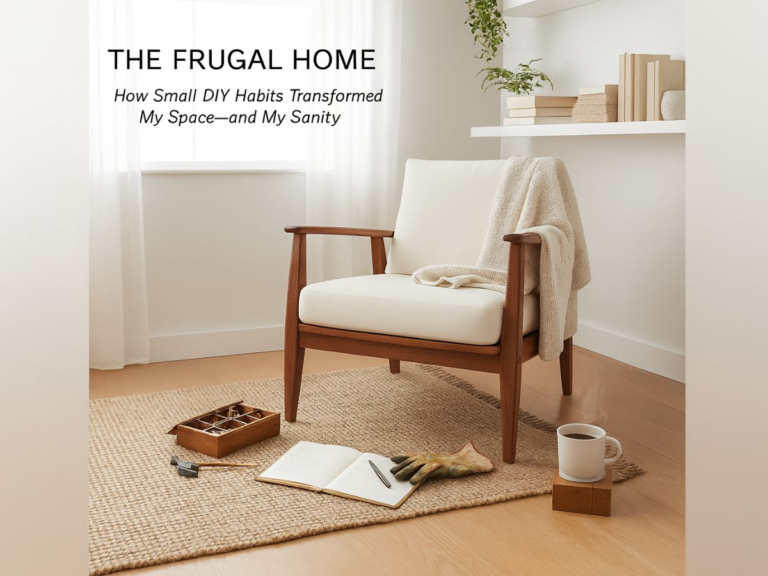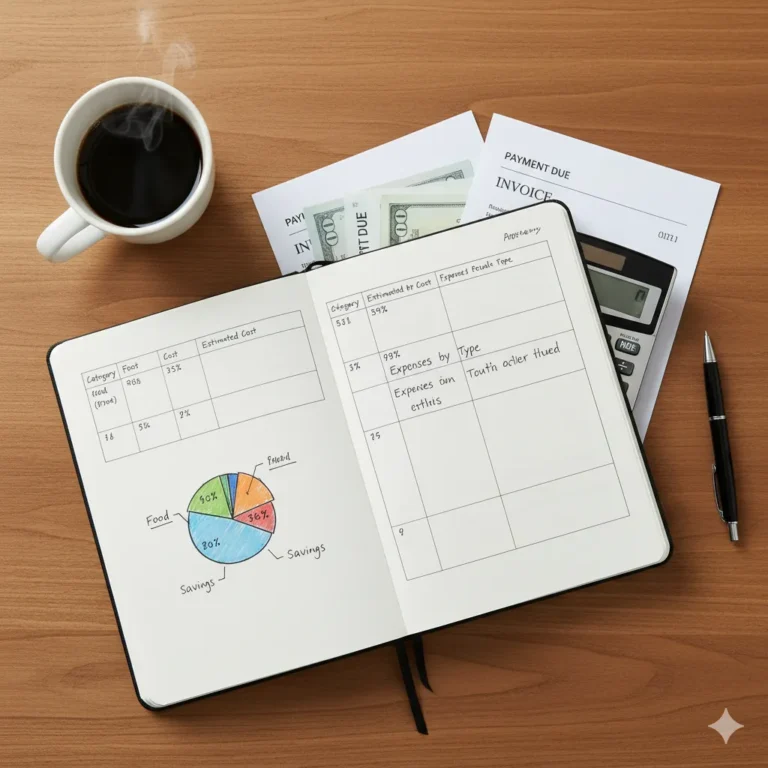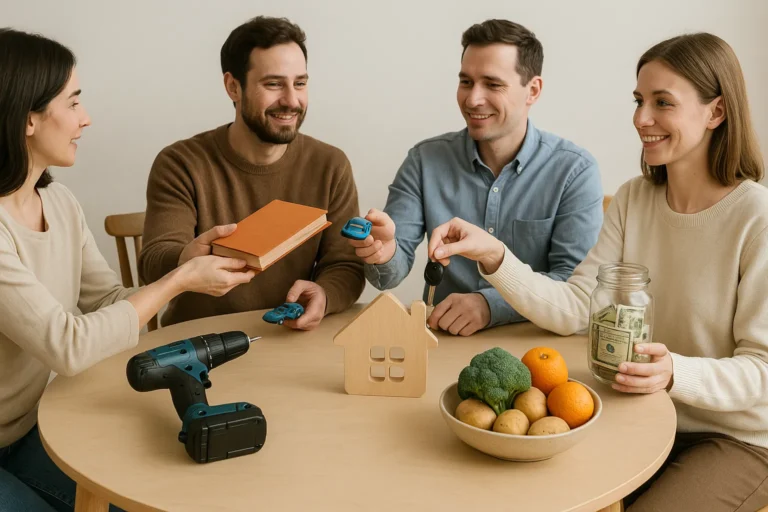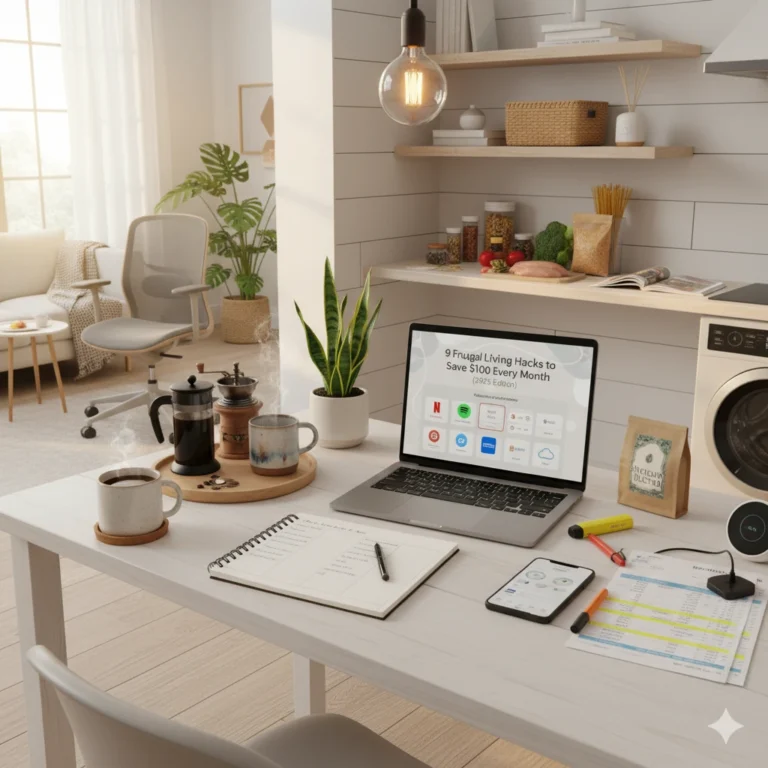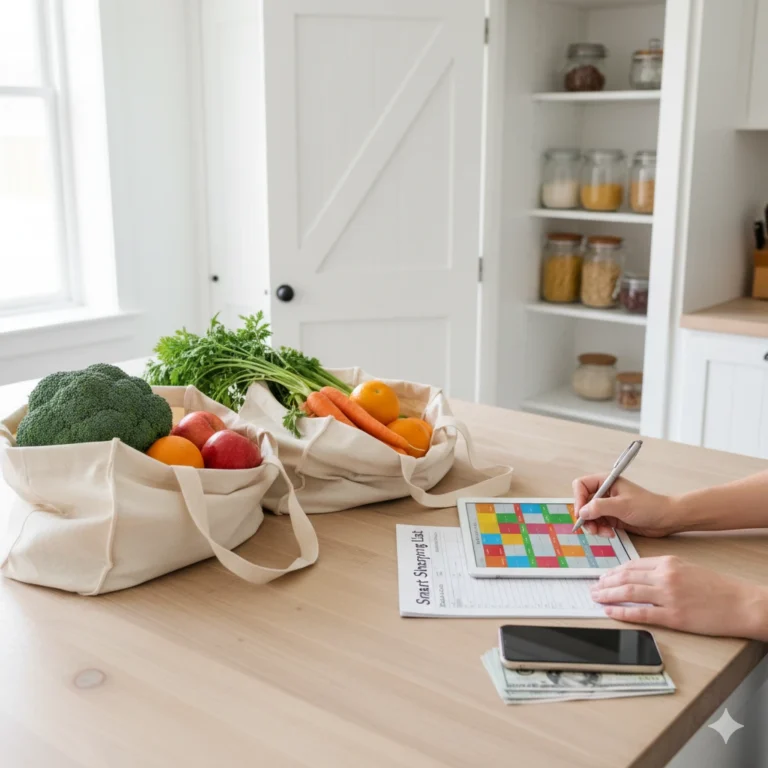10 Everyday Items You Should Stop Buying (And What to Use Instead)
Introduction – When “Saving” Starts with Stopping
Last spring, I stood in a grocery checkout line staring at a cart full of “essentials”: paper towels, bottled water, an air-freshener spray, and a candle that claimed to smell like “mountain air.”
The receipt read $67 — and not a single item on that belt could be considered life-changing.
That night I opened my banking app. Subscription here, delivery there, another “quick” Target run. It wasn’t one big mistake — it was a hundred tiny leaks. That’s when it clicked: saving money isn’t about chasing coupons; it’s about everyday items to stop buying before they quietly bleed your budget dry.
I started testing small, realistic frugal living swaps — tiny changes that simplified my space and strengthened my wallet. Week by week, my home got quieter, my spending slowed, and my stress level dropped. This list is my field guide for anyone trying to build intentional spending habits and collect practical budget lifestyle tips that stick. Think of it as the friendly intersection where minimalism and saving money meet: fewer pointless purchases, more calm, same good coffee.
Below are ten swaps that helped me save roughly $1,200 a year without giving up comfort or joy.
1. Paper Towels → Reusable Cloths
For years I thought paper towels were harmless — “just a few rolls.” Then I hosted friends for a weekend and used two rolls in 24 hours. Wiping spills, drying fruit, cleaning the dog’s paws — basically, I was mopping up cash.
When I checked my receipts, I’d spent $144 that year on paper towels — literally paying for trash. I swapped them for linen and microfiber cloths ($15 for a 12-pack) and placed two baskets under the sink labeled “clean” and “used.” Within two weeks it felt effortless, and my garbage bag filled half as fast.
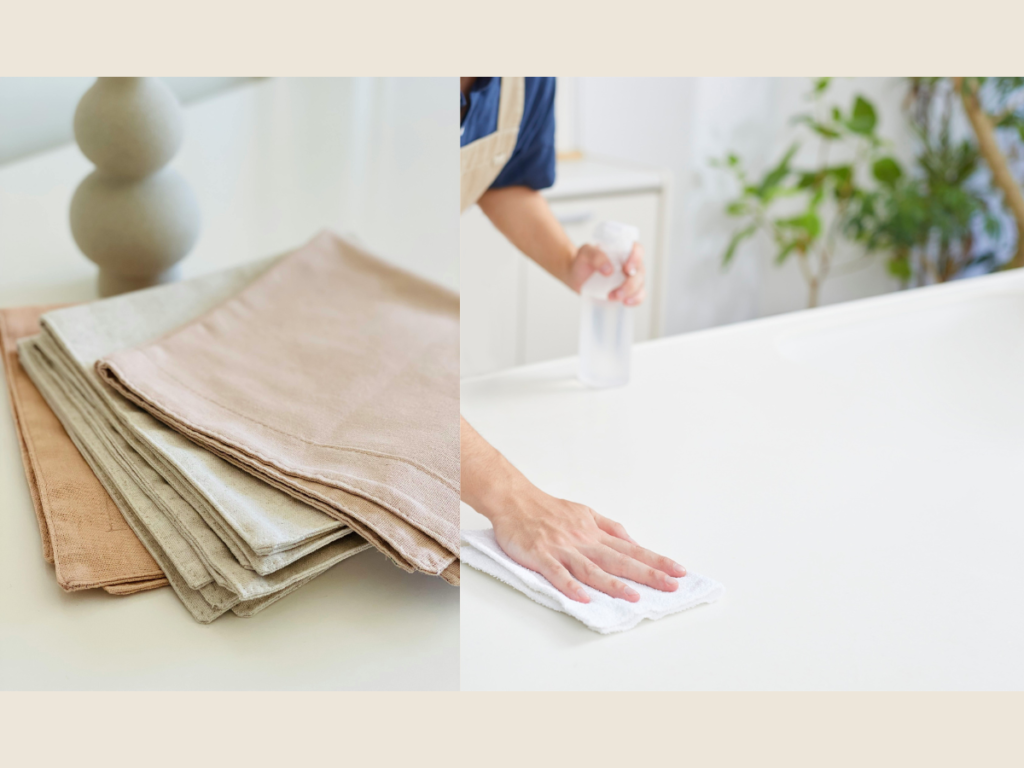
According to the Environmental Paper Network’s report on paper waste reduction impacts, every roll we skip saves not only money but trees, energy, and water. Small household choices really can protect forests while protecting your budget.
That’s what I love about frugal living swaps: they turn every dollar saved into something that feels morally good. It’s minimalism and saving money rolled into one.
💡 Quick Tip: Color-code cloths by task so you never mix dish towels with floor rags.
👉 Challenge: Go paper-towel-free for seven days. Track how often you almost reach for one — awareness is half the victory.
👉 Related: The Frugal Home: DIY Fixes and Upgrades That Save You Money
2. Bottled Water → Filter Bottle or Pitcher
Confession: I once kept a 24-pack of bottled water in my car “just in case.” At $1.50 a bottle, that habit quietly drained about $45 a month. Half the time, the bottles rolled around half-empty under the seat like tiny, expensive maracas.
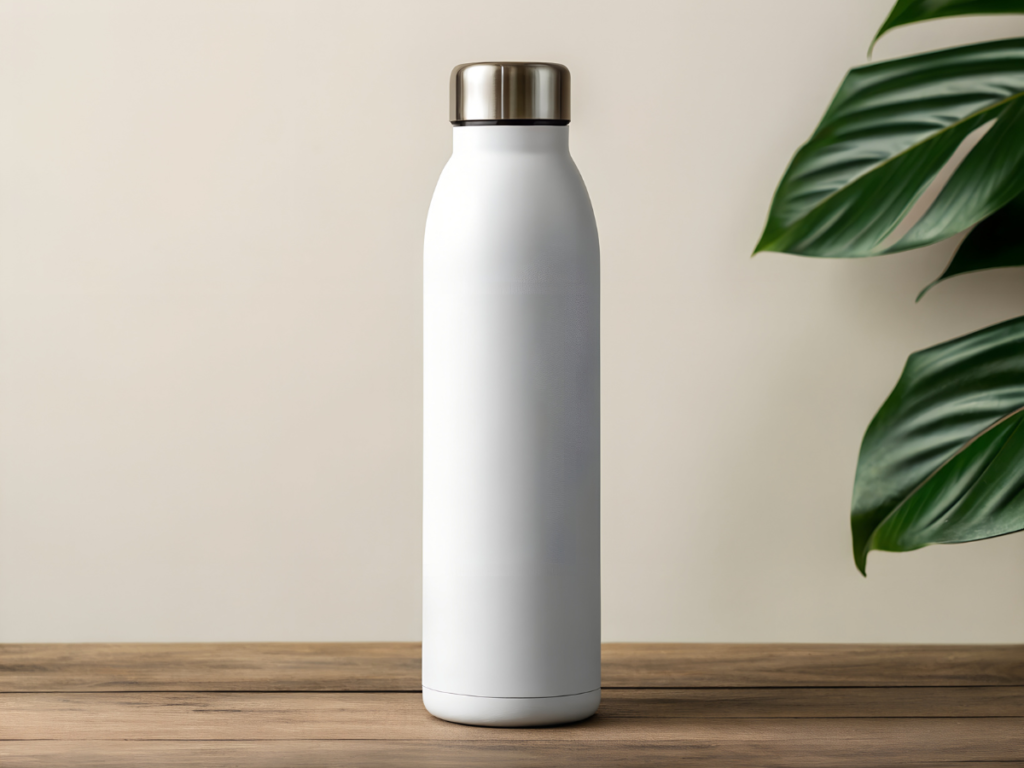
Then I learned the math — and the truth. According to an NRDC analysis comparing bottled water vs. tap water, tap water in most U.S. cities is rigorously tested, safer than people think, and up to 2,000 times cheaper. Choosing reusable bottles over disposables doesn’t just save money; it cuts plastic waste and microplastic exposure dramatically.
So I bought a Brita pitcher for home and a stainless-steel bottle for work. Within two weeks, I noticed three things: my grocery bill dropped, my trash shrank, and I actually drank more water because it was already cold and ready.
It’s one of the easiest frugal living swaps on this list — an instant upgrade in both health and habit. Fewer plastic bottles cluttering my car, more hydration, and that quiet satisfaction of living with purpose. This is what intentional spending habits look like in everyday form: smart, sustainable, simple.
💡 Quick Tip: Keep one bottle in your fridge and one in your bag to end the “I forgot my water” excuse.
👉 Challenge: Add up your bottled-water receipts for a month. That number alone could buy a year’s worth of filters — and fund your next coffee run guilt-free.
👉 Related: Smart Grocery Shopping Hacks That Cut Your Food Bill in Half
3. Coffee Pods → Ground Coffee + French Press
Morning used to sound like click, drip, toss. One cup cost eighty cents, two a day added up to nearly $50 a month — for convenience and a plastic guilt trip.

Then one Sunday I ran out of pods and dug out a French press. Grinding beans by hand was weirdly soothing. By the third morning, I was hooked. The smell, the ritual, the pause before pouring — it made the coffee taste like an earned moment.
Now I spend about $15 a month and toss nothing into landfills. It’s one of those frugal living swaps that quietly teaches gratitude. If you’re chasing minimalism and saving money, start with something you already love and simplify it.
💡 Quick Tip: Buy beans in bulk, grind once a week, and store in airtight glass jars. Better flavor, less waste.
👉 Challenge: Run a one-week “no pod” experiment. If you still miss them by Friday, I’ll buy you a candle (#5 will explain why I won’t).
👉 Related: 9 Frugal Living Hacks to Save $100 Every Month
4. Brand-Name Cleaners → DIY Vinegar Mix
My cabinet once looked like a chemical rainbow: sprays for glass, countertops, bathrooms, and stainless steel. Then I read the labels — same base ingredients, different marketing.
Now I make my own: one cup vinegar, one cup water, a handful of lemon peels, and a teaspoon of dish soap for grease. That’s it. Each refill costs less than fifty cents and smells like a clean kitchen instead of a lab. It’s the definition of minimalism and saving money — fewer bottles, less clutter, more clarity.
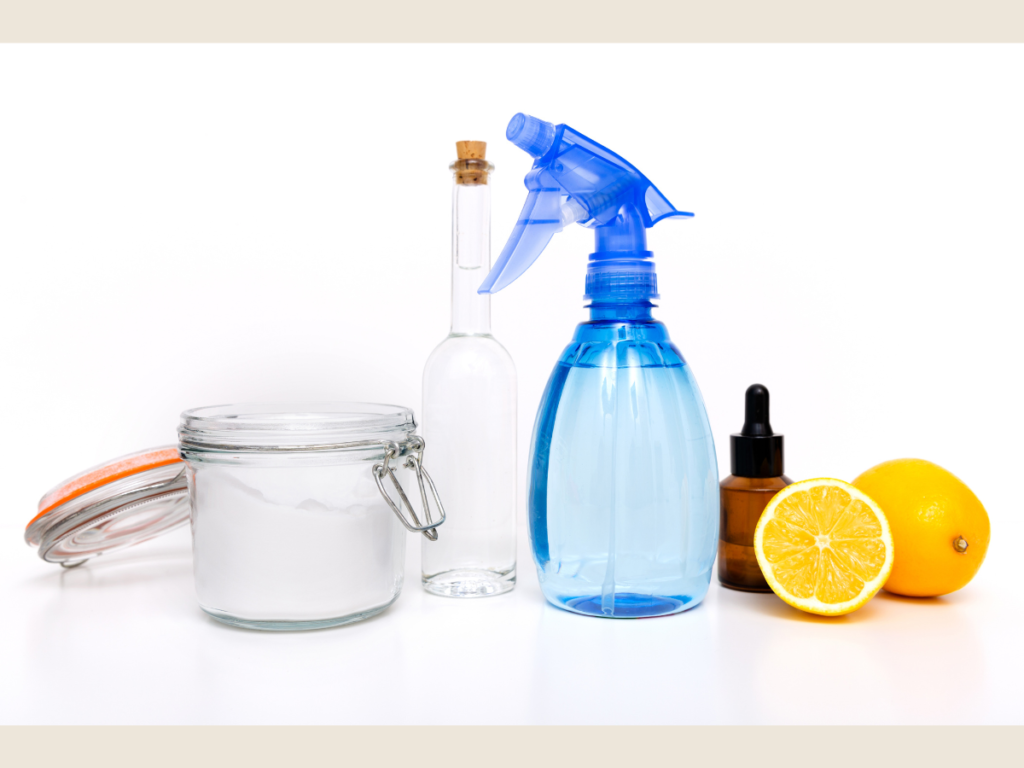
💡 Quick Tip: Let citrus peels soak in vinegar for a week before mixing to soften the smell.
👉 Challenge: Replace one store cleaner this week. You’ll feel oddly empowered spraying something you made yourself.
👉 Related: How to Cut Utility Bills: Simple Energy-Saving Tips That Really Work
5. Scented Candles → Essential Oil Diffuser or Citrus Pot
My living room used to smell like a candle store exploded. Then one night I knocked one over and spent an hour scraping wax off the rug (and dog). Now I simmer orange peels, cinnamon sticks, and cloves in water for a natural scent or use a simple diffuser.
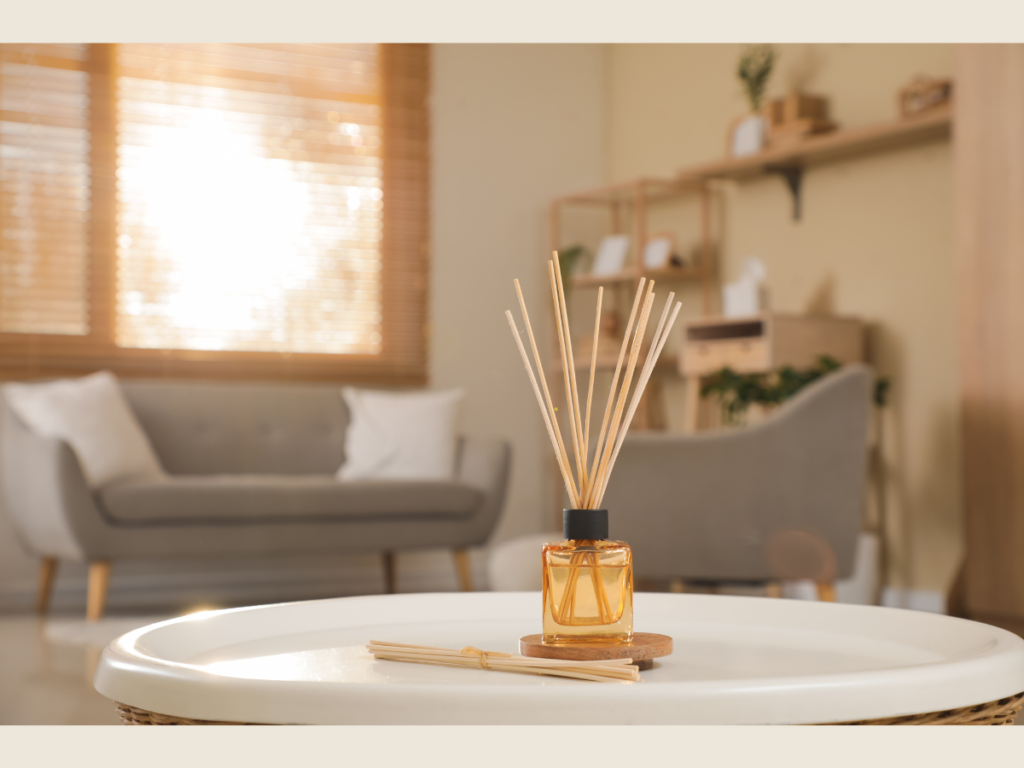
One small bottle of oil lasts months and costs a fraction of my old candle habit. That’s not just money saved — it’s peace of mind. And every time I walk in and smell citrus instead of synthetic “ocean breeze,” I remember why intentional spending habits matter.
💡 Quick Tip: Two drops of peppermint oil and a cup of water make an instant room spray.
👉 Challenge: Declare a “no-new-candle month.” Notice how much calmer your space smells without smoke and guilt.
6. Plastic Wrap & Ziploc Bags → Glass Containers + Beeswax Wraps
For years, I packed every snack and leftover into a plastic baggie. It felt convenient until I realized I was spending about $5 a month just on disposables. Multiply that by twelve and I was basically throwing sixty dollars — and a lot of plastic — into the trash.
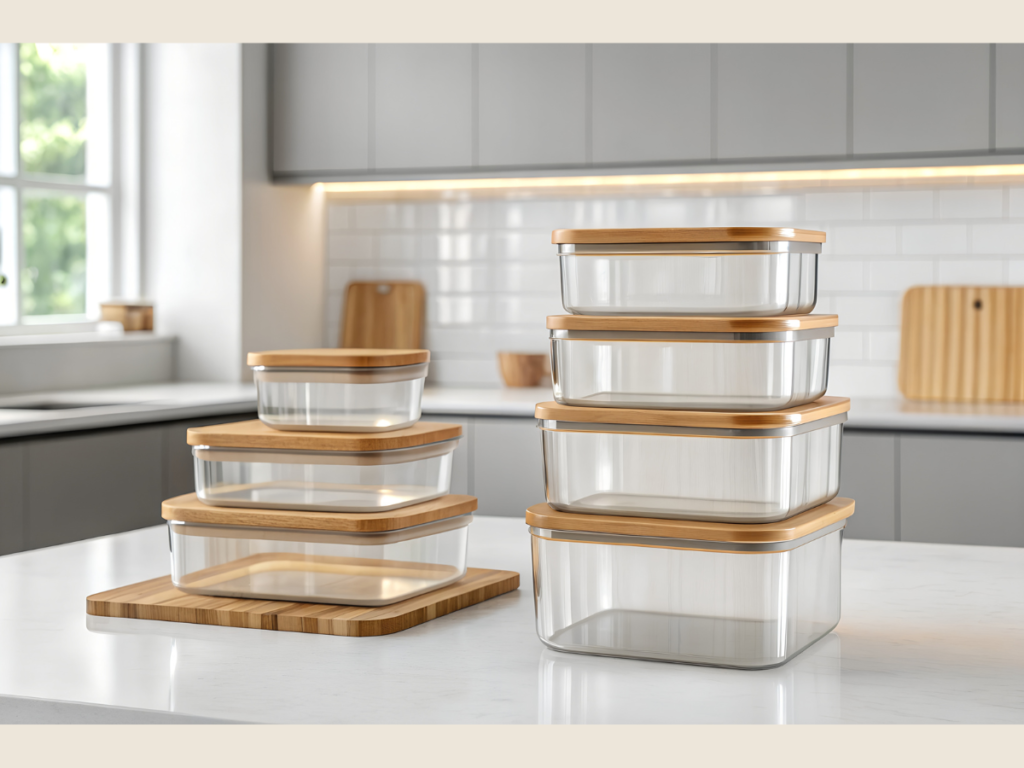
One weekend I decided to test a pack of beeswax wraps and a few glass jars. My fridge instantly looked calmer. I could actually see what food I had, which meant less waste. This small decision was the gateway to frugal living swaps throughout the kitchen — a mix of practicality, aesthetic pleasure, and environmental sanity.
Every time I open a drawer that used to overflow with plastic rolls and boxes, I feel that quiet satisfaction of minimalism and saving money.
💡 Quick Tip: Wash beeswax wraps only in cool water — hot water melts the wax. Dry them on a rack for longevity.
👉 Challenge: Replace just five plastic bags this week with reusable containers. Watch how quickly you build momentum.
👉 Related: Minimalist Living: How Owning Less Saves You More
7. Fast Fashion → Capsule Wardrobe Staples
A few years ago I stared at a closet packed so tight I could barely pull hangers apart — and still said, “I have nothing to wear.”
That moment cost me $65 for a shirt I wore once.
Eventually I built a 25-piece capsule wardrobe: jeans that actually fit, neutral tops that all match, and shoes I love. Now I dress faster, feel better, and spend less. It’s minimalism and saving money stitched together — the kind of quiet order that spills into other parts of life.
This shift wasn’t only financial; it reshaped my identity. Buying intentionally turned me from an impulse shopper into someone who knows exactly what they own. That’s one of those budget lifestyle tips that doesn’t just change your wallet — it changes your mornings.
💡 Quick Tip: Follow the “30-wear rule.” If you wouldn’t wear it thirty times, skip it.
👉 Challenge: Sell or donate five unused items this weekend and feel the space (and gratitude) multiply.
👉 Related: Minimalist Money: How Minimalism Helps You Save and Build Wealth
8. Single-Use Batteries → Rechargeables
Every December I’d realize half the house needed new AAs — string lights, remotes, cameras. Ten bucks here, twelve there, and by year’s end, nearly $70 gone.
Then I bought a simple charger and four rechargeable batteries. Three years later they still work.
This small move felt like cheating the system. One-time purchase, endless re-use. It’s the sort of frugal living swap that sounds insignificant until you count the savings (and the landfill space).
💡 Quick Tip: Label battery sets A/B and rotate them evenly — they’ll last longer.
👉 Challenge: Switch one high-use device this week and log how long the charge lasts.
9. Pre-Cut Produce → Whole Veggies + DIY Prep
Those neat plastic tubs of sliced fruit look innocent until you realize they cost triple the price of whole produce.

I used to buy them claiming, “I don’t have time.” But when I tracked it, chopping veggies myself took maybe twenty minutes a week.
Now Sunday afternoons are “prep time.” I throw on a podcast, sharpen a knife, and create colorful boxes of ready-to-cook food. It’s oddly therapeutic — proof that intentional spending habits can make life richer, not smaller.
Whole produce lasts longer, tastes fresher, and costs less. That’s the trinity of minimalism and saving money: time, taste, thrift.
💡 Quick Tip: Line storage containers with a paper towel to absorb moisture and extend freshness.
👉 Challenge: Commit to one DIY prep day this week and notice how much smoother your meals (and mood) become.
👉 Related: Can You Really Feed a Family on $50 a Week?
10. Subscription Overload → The One-or-None Rule
Here’s where I embarrass myself: one audit revealed eight active subscriptions — Netflix, Spotify, Disney+, Audible, Canva, and two mystery apps I didn’t even remember downloading.
They were eating $65 a month — money that could have paid my internet bill.
I canceled five and adopted a rule: one streaming, one utility, one luxury. If I add a new one, another goes.
It’s the clearest example of intentional spending habits I know — a digital declutter that feels physical.
Now my screen looks cleaner, my budget lighter, and my evenings freer. That’s not sacrifice; that’s design.
💡 Quick Tip: Set a quarterly “Subscription Audit” reminder on your calendar.
👉 Challenge: Cancel one service tonight. You probably won’t even notice it’s gone.
👉 Related: Digital Minimalism: How to Declutter Your Online Life
Conclusion – The Real Luxury Is Less
Since cutting these habits, my home feels lighter, my wallet steadier, and my days calmer. There’s less packaging in the trash, fewer “out-of-sight” expenses, and more mornings that begin without chaos.
That’s the magic of frugal living swaps — they don’t just save dollars; they restore direction. Each small choice reshapes your surroundings, mindset, and energy. You start to see how minimalism and saving money are twins: both are about freedom from excess.
If you only take one thing from this list, let it be this: saving isn’t punishment; it’s permission.
Permission to own less, breathe more, and live intentionally.
Pick one of these everyday items to stop buying this week — paper towels, bottled water, or that forgotten subscription.
Stack a few budget lifestyle tips next month, and you’ll start to feel the compounding calm of deliberate living.
Because every unnecessary dollar unspent isn’t just “saved” — it’s transformed into time, peace, and possibility. And that, my friend, is real wealth. 💚
FAQ – Common Questions About Everyday Swaps
Q1. Are these frugal living swaps realistic for busy people?
Absolutely. Start with one visible area — paper towels, bottled water, or a single subscription — and build from there. Most of these frugal living swaps take under 10 minutes to set up and quickly become second nature once you see the savings add up. They’re proof that minimalism and saving money don’t require a major lifestyle overhaul — just small, intentional tweaks.
Q2. What if my city’s tap water doesn’t taste good?
Use an affordable filter pitcher or an under-sink filter. It’s still cheaper and greener than disposable bottles, and according to the NRDC, tap water in most U.S. cities is regularly tested and safe to drink. If you’re building intentional spending habits, investing once in a good filter is one of the simplest budget lifestyle tips that pays for itself quickly.
Q3. How do I stay motivated without feeling deprived?
Tie every swap to a small reward or ritual. Make your Sunday meal prep a calm routine, or celebrate canceling a subscription by treating yourself to a home-brewed coffee. These micro-moments keep intentional spending habits joyful instead of restrictive — the true essence of minimalism and saving money in everyday life.

